This isn’t directly related to our class projects, but thought it might be of interest
This little-noticed court settlement will probably save millions of animals
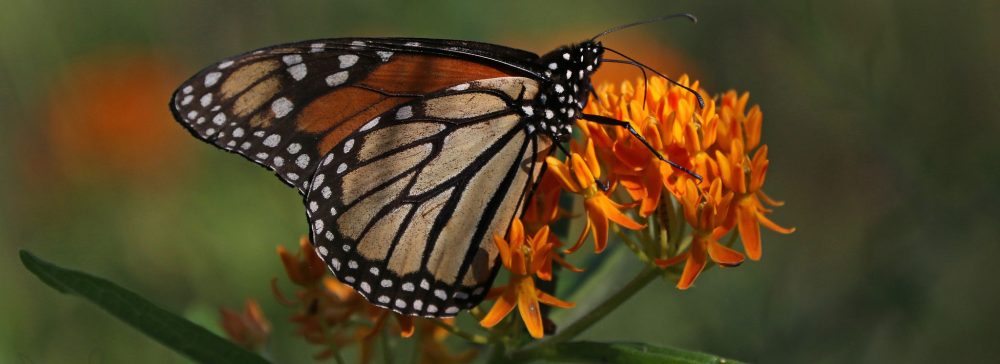
This isn’t directly related to our class projects, but thought it might be of interest
This little-noticed court settlement will probably save millions of animals
Dealing w/ Pests:
Many college’s have a Integrated Pest Management Systems.
Oberlin College: “the plant is treated by correcting water deficiencies, lowering root temperatures or by mulching or pruning diseased branches. The area is examined for beneficial insects that could control the target pest. When cultural practices are in place to the best degree our resources will permit, the plant’s value is evaluated. If the plant can be replaced by a resistant variety, it is removed and replaced. Plants that are valuable are monitored. The pest is left unmolested until the injury exceeds the economic damage threshold. Past the economic damage threshold the infestation is judged to be an imminent threat to a college asset. At this point chemical controls are used.”
https://new.oberlin.edu/office/environmental-sustainability/progress/grounds.dot
Harvard:
“Aerating to reduce plant stress
Monitoring moisture because inadequate moisture levels can weaken plants and make them susceptible to pest problems.
Applying compost teas to suppress powdery mildew.
Introducing and cultivating beneficial insects which prey on destructive insects.
Manually removing infected tree and shrub branches.
Manually removing weeds.”
http://www.energyandfacilities.harvard.edu/facilities-services/landscape-maintenance/organic-maintenance-program
Seattle University:
-Use home brewed compost tea sprayed ( introduces beneficial communities of fungi, bacteria, and microscopic arthropods)
-grounds team works on maintaining the overall health of turf and fields by aeration, fertilization and watering
-control weeds before they go to seed
-coarse woodchip mulches to control weed germination in beds and gardens, and
planting dense groundcovers
http://www.paladinoandco.com/wp-content/uploads/2012/11/Pesticide-FreeCampuses.pdf
These campuses all provide alternatives and guidelines to our pesticide problem. We need to decide whether we want to lay our guidelines for IPM and just have reduced pesticide use or go full out and attempt to look more like Seattle University.
Also other great resource links and putting them here for safe keeping: http://sustainability.tufts.edu/wp-content/uploads/SustainableTurfCare.pdf
http://vsa.vassar.edu/orgs/vassargreens/2013/05/22/vassar-agrees-to-stop-spraying-toxic-24-d-pesticide/
https://news.lafayette.edu/2011/02/18/dam-removal/
This is an article from February, 2011 titled “Student-Faculty Team Studies Implications of Removing Dam along Easton’s Bushkill Creek”…The school had assessed this damn for at least a decade, students have studied and researched the creek, and now we are creating a design concept for this area even though the dam is still there! According to the piece, a map was created of the channel to assess the impact of dam removal. I would like to get my hands on this map so we can begin creating designs based on width of creek at multiple locations of projected area.
Faculty noted in piece are: Steven Mylon, David Brandes, Dru Germanoski, John Wilson, DC Jackson, Art Kney, Megan Rothenberger and Andy Smith.
http://blogs.discovermagazine.com/crux/2015/01/16/thorium-future-nuclear-energy/#.WAApU5MrKRs
This is a link to an article by Discover Magazine on Thorium Nuclear Power. As the US moves into a more sustainable energy mix within the next 50 years, I think thorium nuclear power plants could be a really interesting addition to our infrastructure because there is minimal waste, little to no risk for meltdowns and there is an abundance of thorium. The only catch is that a small amount of uranium is needed to catalyze the reaction!
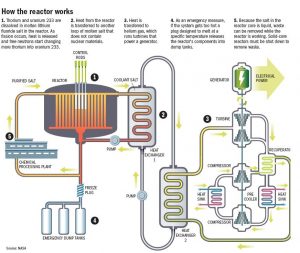
Drip irrigation: thought it might be best for little patches of plantings that get high pressure sprinklers that often miss the plants and spoil. Drip irrigation will reduce water loss, reduce maintenance, and reduce soil erosion and nutrient leaching. However I ma not sure if drip is best for large agricultural uses or if it is applicable for smaller spaces. I will look into it further! http://extension.psu.edu/business/ag-alternatives/horticulture/horticultural-production-options/drip-irrigation-for-vegetable-production
Rain sensor!! Seems like a simple fix but when I researched options I got mostly links of places to buy them rather than the importance of them and logistics. Will do more research!
I also found this plant on my walk past Farinon! Looked it up and of course it is native to tropical and subtropical Americas, Africa and Asia and are considered to be weeds in their native habitat… It was advertised on many websites as “great for patios” and “will give your garden a pop of color and texture!” I’m assuming it was planted for homecoming because it does look maroon in color and I found it on the Thursday before Homecoming weekend? We definitely need to be considering not just natives but what will aesthetically look good and please those needs of the color
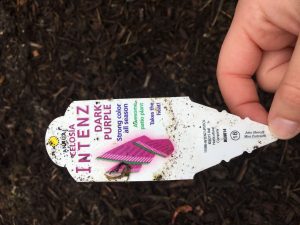
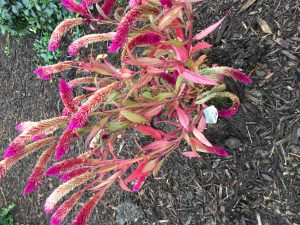
Lots of utility lines marked out but luckily they were deeper
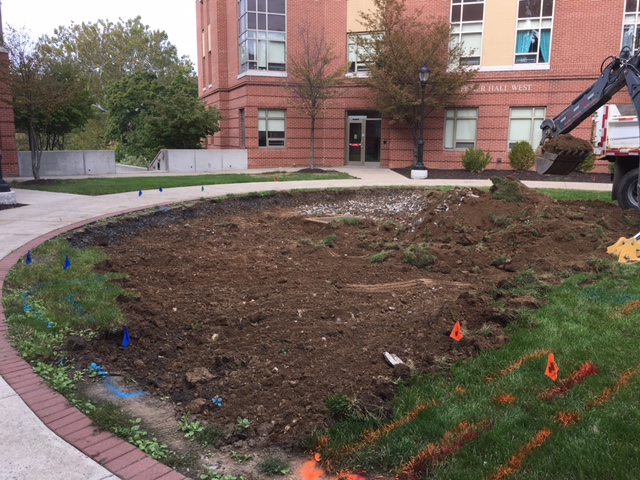
A few months ago in the summer, I came across a Facebook page by the name of “Raising Chickens without the Drama”. I joined it mostly because I thought the name was funny, but it has since become a very useful tool on this chicken journey. It’s 8,000+ members are chicken lovers from all over the country! Members will post trying to sell and pass along roosters, or concerned chicken owners will post asking questions about sick chickens.
Although this is a much less formal way of getting information on chickens, the honesty of the members and years of experience make up for the lack of proper grammar. One of my biggest concerns with getting chickens for LaFarm is the prospect of chicken disease. These illnesses are easily spread among a flock and can often take the whole coop out in a matter of weeks. This page has given me a better understanding of common chicken illnesses, infections and skin diseases. While preventing them isn’t always simple, these people have a wealth of knowledge on curing illnesses and how to protect the rest of the flock.
Other tips on this page includes what breeds get along well, how to make your own chicken feed and what to do with aggressive roosters. I am hoping that as we get closer to the implementation stage of the chicken farm, this community will be a great resource to us.
Go to the FEMA Flood Map Service – at the bottom of the page is a Locator map, zoom way in to Easton. You will see a grid of boxes that correspond to the maps – the map for our area is designated 42095C0279E. Once you select it, some icons will appear at the top – click on the View Map or Save Map icon.
Here is a screenshot:

The area with blue dots is within the 100-yr floodplain, and the grey dots are the 500-yr floodplain.
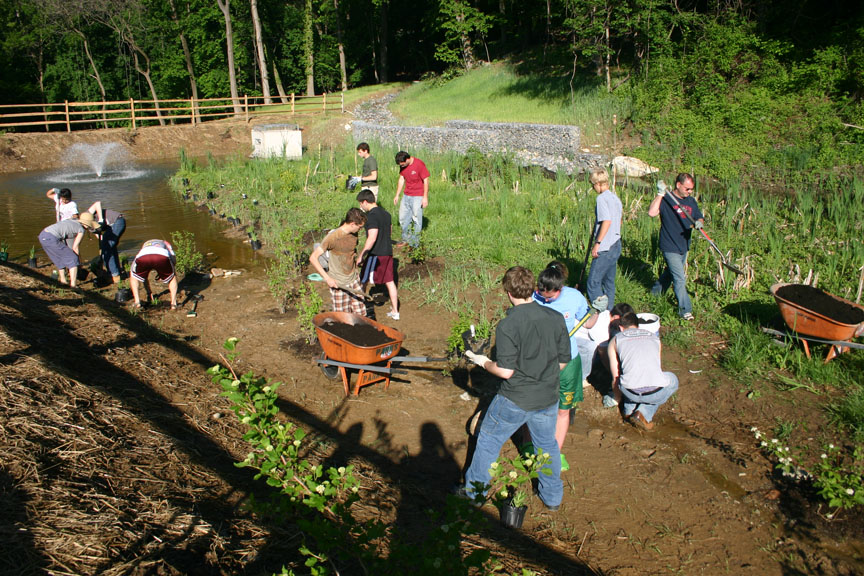
Students planting the wetland at Sullivan Park, spring 2010
Bruce says the contractor will be working at Fisher later this week. We need to get the flyers posted and a survey up and running asap!
En route to our lab site for Geo 115, John Wilson and I were talking about his 70 acre farm…which led to our lengthy conversation about his chickens. I mentioned to him that a group within the capstone was working on a plan to add chickens to Lafarm’s repertoire. He gave me a TON of insightful information regarding all logistics, chicken behavior, types of chickens, costs, etc etc. He knows you might reach out to him, so I strongly encourage you to do so! He’s with them every day of every year, 6am and on. The conversation was extremely enlightening…even for a non-chicken group member, so send him an e-mail ASAP. This conversation will hopefully give the project a great amount of direction into the chicken sphere.
John Wilson’s E-mail: wilsonj@lafayette.edu